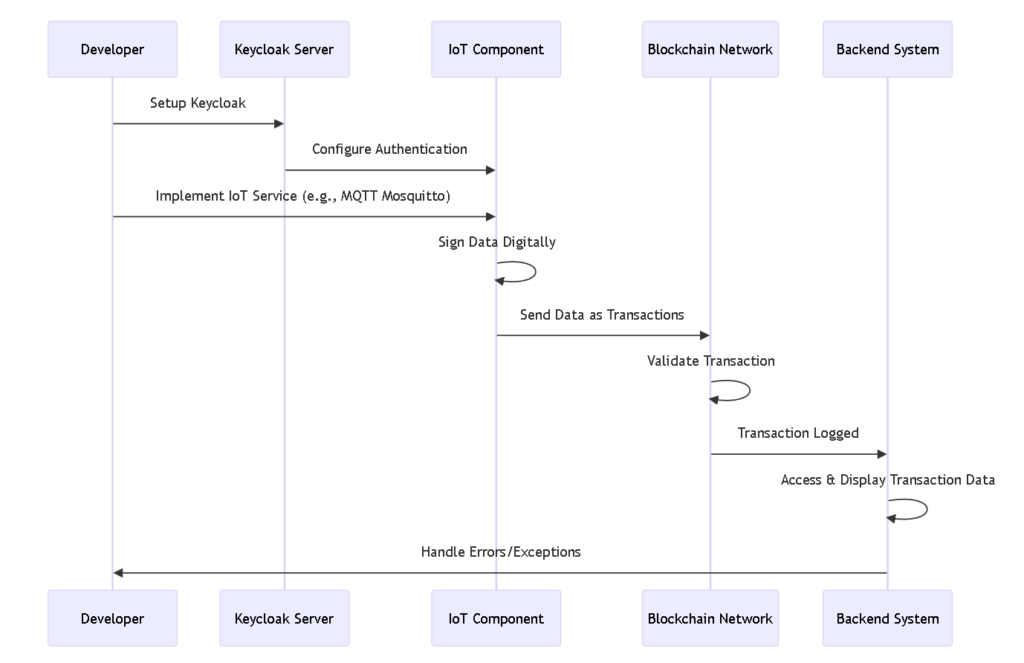
- Creating a Digital Authentication Server: Utilize an open-source service such as Keycloak to establish a digital authentication server. This server will manage access and identity for users and devices interacting with the blockchain.
Integration with Keycloak
- Keycloak Integration: a. Configure Keycloak to interface with the data submission component to the blockchain. This may involve leveraging authentication and authorization protocols like OAuth 2.0 to facilitate secure communication between Keycloak and the blockchain data submission component.
Implementing a Custom IoT Component or Service
- Custom Component or IoT Service Implementation: Implement a customized component or an IoT service (e.g., MQTT Mosquitto) that facilitates the interaction between IoT devices and the blockchain network.
IoT Node Functionality
- Functionality of the IoT-Connected Node: Ensure that the node connected to the IoT service is capable of: a. Digitally signing data to maintain integrity. b. Associating data with a wallet, a public key, and the address of the smart contract representing its identity on the blockchain. c. Sending data to the blockchain through transactions. d. Upon submission, the blockchain recognizes and validates the transaction.
Monitoring and Management
- Monitoring and Management: a. The backend connected to the network accesses transactions via the master-node and identifies the device that initiated the transaction. If the device is linked to a smart contract, the results will be displayed on the corresponding page. b. Manage any errors or exceptional situations that may arise during the data submission process to the blockchain.
This streamlined process provides a clear and straightforward guide for developers and blockchain experts looking to integrate IoT devices with blockchain technology. By leveraging Keycloak for authentication and implementing a custom IoT component, this approach ensures secure and efficient data handling and submission to the blockchain.